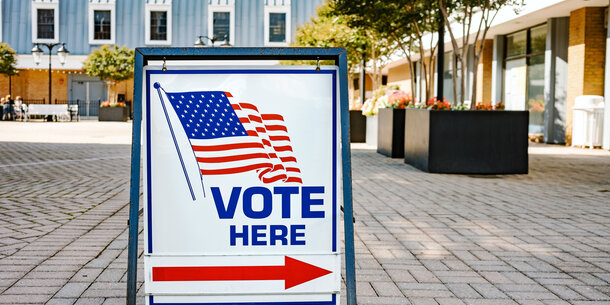New research shows that a restrictive voting law in Texas made people less likely to vote for at least two years after having a mail ballot application or ballot rejected. As we showed in 2022, the voters directly harmed by this law were more likely to be nonwhite, raising important questions about the long-term consequences of laws that fall more heavily on minority voters.
The state enacted Senate Bill 1 in 2021, ostensibly to reduce widespread voter fraud — which in reality does not exist. The law made casting a ballot by mail more difficult, and it ended practices adopted during the Covid-19 pandemic to make voting easier, such as 24-hour and drive-thru voting.
Brennan Center research has already shown that thousands of mail ballot applications and mail ballots were rejected during the 2022 primary due to S.B. 1 and that nonwhite voters were disproportionately impacted. A new working paper from the Brennan Center along with Michael G. Miller and Ian Shapiro shows that voters whose applications and ballots were rejected in the primary were considerably less likely to vote in the 2022 general election and the 2024 primary. And those who did vote often shifted from mail to in-person voting. When voters use these less-preferred voting methods, this can impose time and travel costs on them. It can also make them less likely to vote in the future, as these policies and practices have increased the “cost” of casting a ballot for them.
The new paper, which has been conditionally accepted for publication by the Journal of Politics, sheds new light on just how prolonged the negative effects of restrictive voting policies can be. Looking at the harmful impact in a single election misses how such policies can dampen turnout for years to come, even among relatively engaged voters like primary election participants. What’s more, focusing on turnout alone — and not the costs voters bear when they switch away from their preferred method of casting a ballot — understates the negative effects of such policies.
Application and ballot rejections in the 2022 Texas primary
S.B. 1 required voters to provide their partial Social Security number or state identification number (essentially a state SSN) on mail ballot applications and again on mail ballots. The number they provided had to match a number associated with their record in the registration database. In other words, if a voter had only ever provided their Social Security number but later used their state ID number on their mail ballot, their ballot would be rejected — even if their state ID number was valid.
Because of this new rule, of the approximately 215,000 Texans who requested a mail ballot for the 2022 primary election, some 30,000 had their application or ballot rejected. Of the 30,000 would-be voters, nearly 90 percent never ended up participating in the election.
The disenfranchising effects weren’t distributed equally across the electorate. Black, Latino, and Asian voters had their applications and ballots rejected at far higher rates due to incorrect or missing ID numbers than white voters. Yet there was no statistically significant difference in ballot rejection rates between racial groups for non–S.B. 1-related reasons such as the ballot being received after Election Day.
In addition, the state rejected ballots at slightly higher rates for women, Republicans, independents, and older voters.
Continued disparities in the 2022 general election
S.B. 1’s antidemocratic effects didn’t end with the 2022 primaries. We also found that voters whose application or ballot was rejected in the primary were far less likely to vote in the general election that year. In fact, an application rejection led to a 16 percentage point decrease in turnout in the fall of 2022, relative to what we estimate their turnout would have been without S.B. 1. Voters whose ballots were rejected in the primary were also about 1.5 percentage points less likely to vote that fall.
We saw a similar shift in the method of voting used by those whose applications or ballots were rejected in the 2022 primary election, with more than half of voters either dropping out of the electorate or switching to in-person voting — either early or on Election Day — at high rates.
And that’s not all. We also found that voters whose applications or ballots were rejected in the 2022 primary were still measurably less likely to vote in the March 2024 primary. Further, those who did vote were still considerably more likely to do so in person than they would have been if their application or ballot hadn’t been rejected in 2022.
As of the time of writing, we do not have information about how many of these voters participated in the 2024 general election.
Downstream disenfranchisement
Political scientists often study the effects of a restrictive voting policy in a single election. Such an approach implicitly assumes that once any restrictive policy is eased, voters will return to their previous behavior. But our working paper shows that’s a dangerous assumption: The effects of running headlong into a disenfranchising policy can linger for years. Our findings are especially surprising considering more than 85 percent of voters whose applications or ballots were rejected in the 2022 primary had turned out in each of Texas’s three previous general elections. The effects of trying but being unable to vote would likely be even larger for Texans for whom voting was less of a developed habit.



